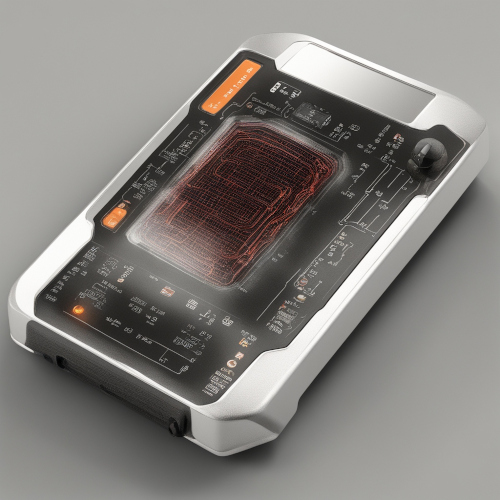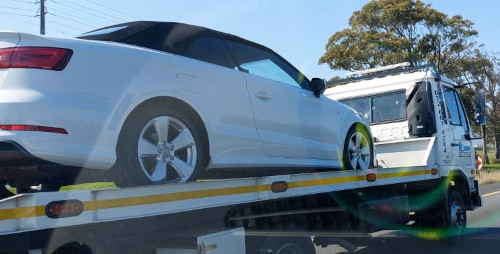VW EPC expounded
As I've explained in an earlier blog, the amber Electronic Power Control
warning light on your car's instrument cluster, is just an indicator light;
drawing your attention to either (1) an Auto-Correct EPC Problem, (2)
a Pending EPC Problem, (3) an Existing EPC Problem or (4) a Current
EPC Problem.
An Auto-Correcting EPC problem occurs when the EPC light goes on
without noticeable difference in engine performance and goes off during
subsequent drive cycles which may be within a day or two or longer.
A Pending EPC Problem could be something as simple as a spark plug
misfiring intermittently and appears in the scan list but after a while
becomes an Auto-Correcting EPC problem alternatively if the plug continues
to misfire it becomes and Exising EPC problem.
An Existing EPC Problem could be something like the MAF sensor or a
accelerator pedal sensor that needs cleaning or replacement and a Current
EPC Problem normally results in limp mode.
EPC light is bright YELLOW/AMBER and acts as a indicator, it is not as a
warning light.
Warning light are always RED.
EPC light is bright YELLOW/AMBER and acts as a indicator light, an advisory
light; it is not as a warning light. Warning light are always RED. Since the ECU "learns your driving style" over time, it records your
optimize drive cycles to non-volatile memory along with atmospheric
pressure, min & max rpm and the average fuel use data, etc, then creates
an adaptive pattern or map based on these parameters.
When this map is compared to sudden spirited driving, it may trigger the
EPC light but will auto-correct (reset) itself after a few driving cycles
within a day or two. Sometimes the EPC light may be accompanied by the Check
Engine Light (CEL).
A Pending Problem can cause the EPC light to come and not switch off on its
own. Pending implies that the problem will only get worse if left unattended
to. A diagnostic scanner is needed to view the DTC error, hence its really
worthwhile investing in one.
For example, assume that cylinder number 3 randomly misfired a few times as
the pending problem. The scan freeze frame data will show something like
this.
000771 - Cylinder 3
P0303 - 000 -
Misfire Detected - Intermittent
Freeze Frame:
Fault
Status: 00100000
Fault
Priority: 2
Fault
Frequency: 7
Reset
counter: 255
Mileage: 38187 km
Time
Indication: 0
Date:
2021.11.05
Time:
21:09:58
Freeze Frame:
RPM:
758 /min
Load:
13.1 %
Speed: 0.0 km/h
Temperature: 51.0°C
Temperature: 33.0°C
Absolute Pres.: 830.0 mbar
Voltage: 12.435 V
What this means is that cylinder misfired 7 time, and that the most recent
misfire occurred at the displayed time and date highlighted in red and has a
fault priority of 2. Fault priority of 4 or lower needs to be attended
to immediately since it affects the driveability of the car. Don't ignore
the VW EPC light.
Fault priority of 5 and above doesn't require immediate attention but must
be attended to sooner rather than later. The freeze frame date shows that
the car was idling and 758 rpm with the speed at 0 kph and that the engine
hasn't reach its optimum operating temperature as yet. In a nutshell, freeze
frame captures the engine operating conditions at the time when the EPC
error occurred.
An Existing EPC Problem could mean either the throttle pedal,
throttle body, or brake control unit or any other circuit related to the
torque circuit, like the cruise control unit or the traction control
unit is misbehaving. However the EPC light can also indicated an
unrelated problem like a loose fuel cap. With the EPC light on, and a
pungent fuel smell inside the cockpit would point you to fuel
cap.
Since the fuel is under pressure, the fuel pump, fuel regulator or fuel
rail pressure sensor may also be suspect, each should be excluded through a
process of elimination. Remember the Electronic Power Control system is
integrated with several other systems on you vehicle, like the steering
control unit and the ECU, hence it's not always easy to diagnose.
Its permissible to drive your VW for a short distances and for a
short period of time after the EPC light has triggered, that's to say if
driveability hasn't been impaired but its best to either fix it yourself or
take it to VW service center. An EPC dashboard light can be
caused by any of the following, but in no particular order. Sometimes both
the EPC light and CEL (check engine light) would turn on.
1) Brake Light Switch failure
2) Mass Air Flow Sensor failure
3) Engine Speed Sensor failure
4) Throttle System Potentiometer Failure
5) Cruise Control failure
6) Accelerator Pedal Potentiometer failure
7) Repeated cylinder misfires
8) Loose fuel cap
9) Blown / Faulty brake light
Any of these can and may cause your vehicle to go into
“limp mode” which can be described as a Current EPC Problem. When
limp mode strikes, the Engine Control Unit will limits the functions of the
torque circuit and transmission thus prevent your VW's engine from
revving higher than 2000 rpm and limit its speed to 30-45 kpm.
Some mechanics would reset the EPC light by cleasing the DTC list without
fixing the actual problem but this is not recommended. When the
Diagnostic trouble codes (DTC) are cleared,
"your driving style" map is also deleted, meaning that the ECU would
have to relearn "your driving style" from scratch and
your VW's performance may seem a bit off. That's to say, until your
racked up sufficient drive cycles (data) with which the ECU can do an
analysis in real time.















